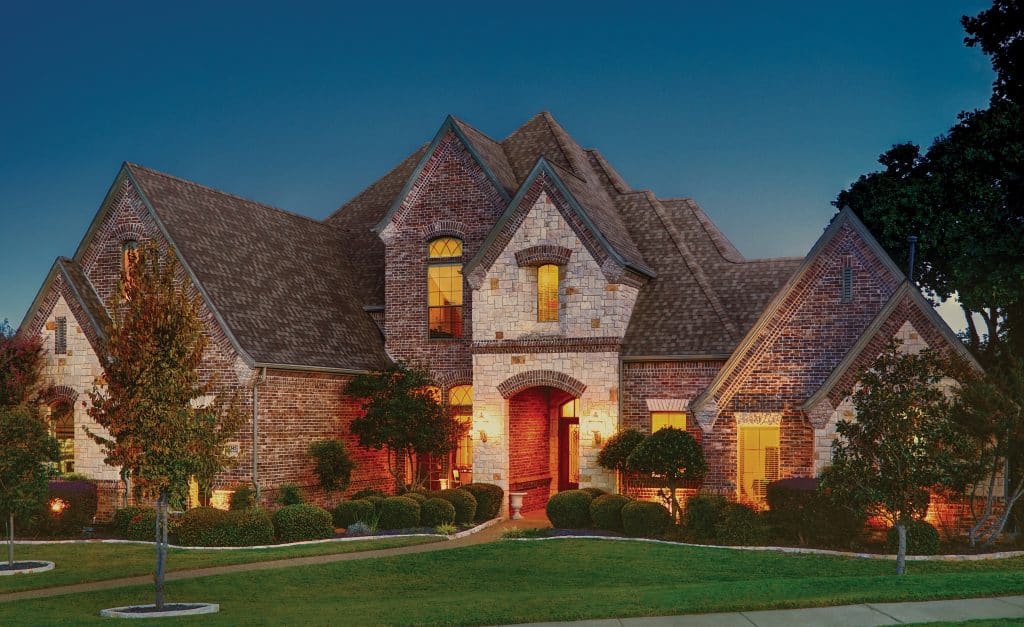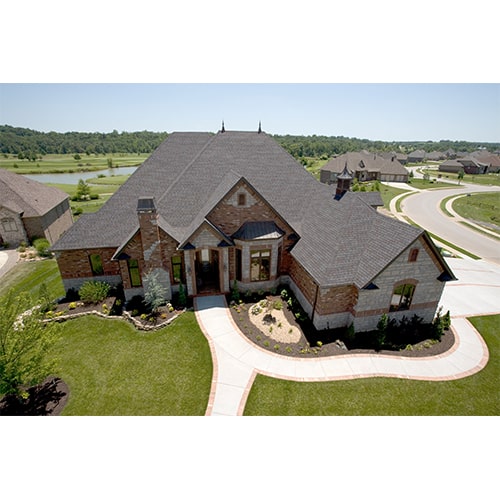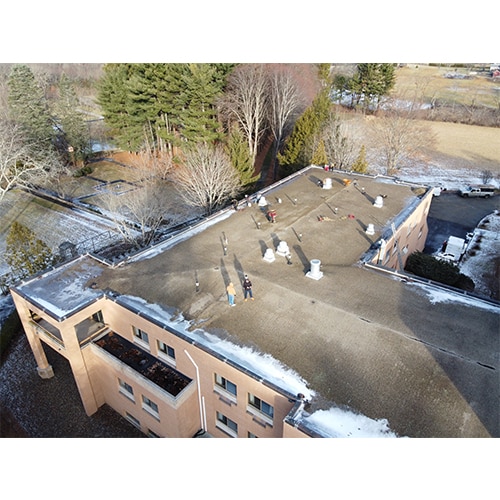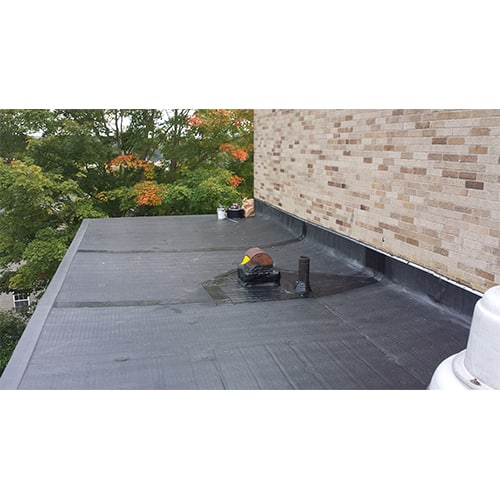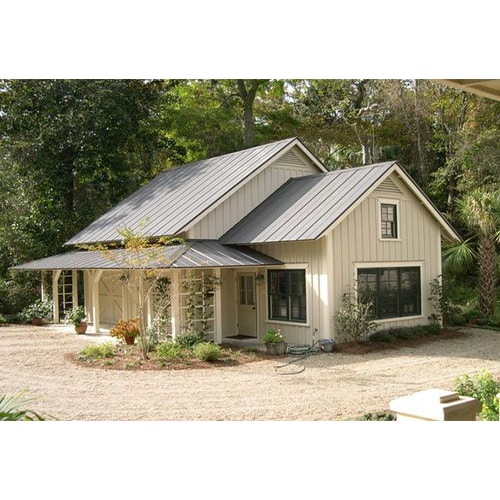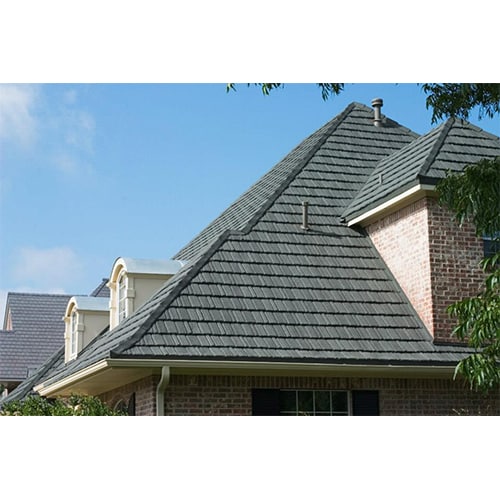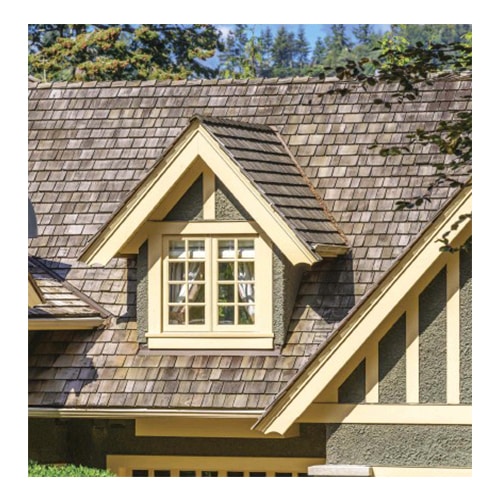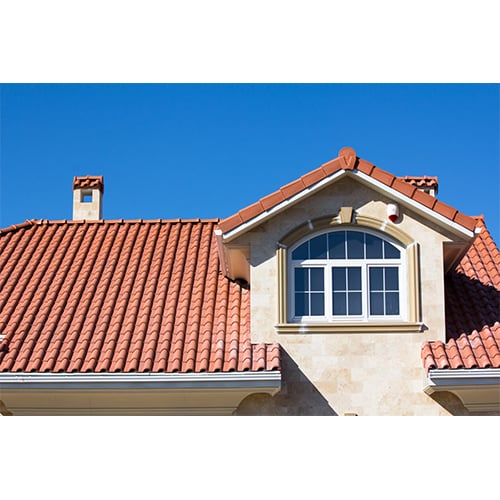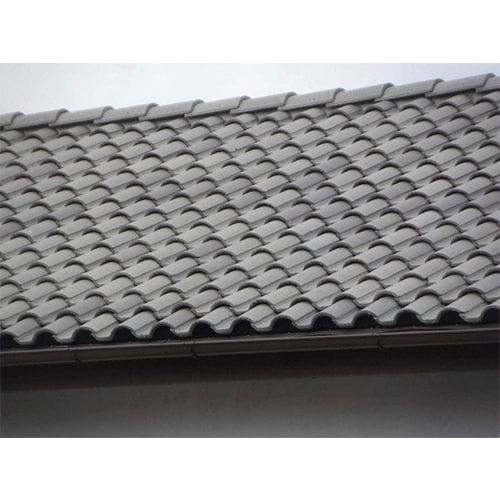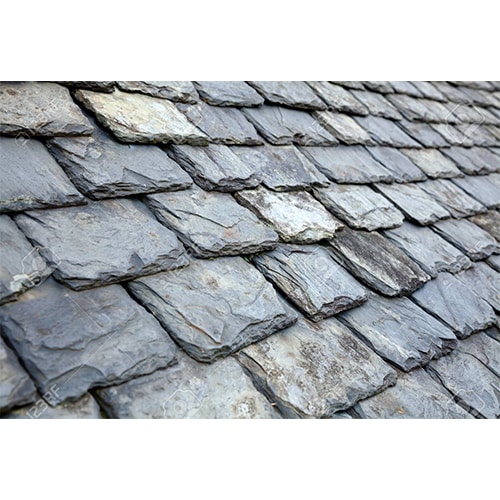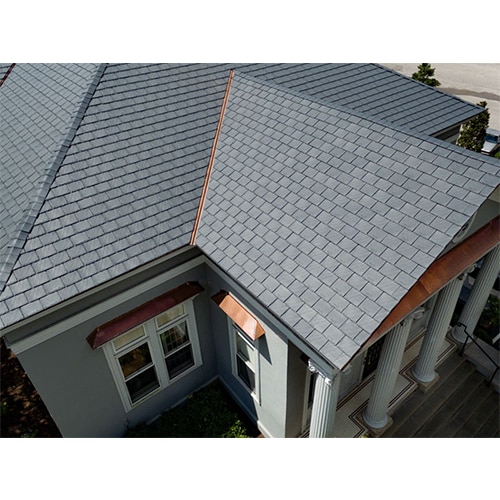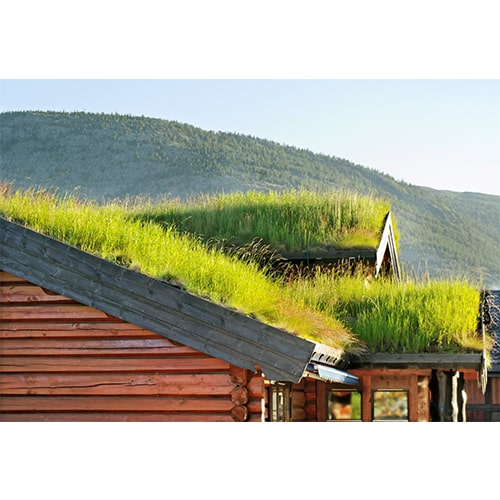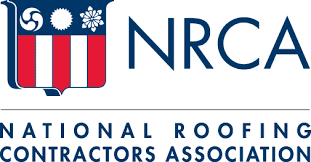Many homeowners rarely think about the roof over their heads keeping them dry, most probably feel that replacement is rarely necessary. However, their tune can quickly change when there is a leak and they suddenly notice damage in their attic and on their ceilings. There are many types of roofing materials that homeowners can have installed on their home. It may feel right to just replace your roof with the same material that was previously covering it. However, we encourage you to weigh your options to find the best value, protection, and energy efficiency for your roof replacement.
Asphalt Shingles
By far the most popular roofing materials in New England, asphalt shingles protect thousands of buildings throughout the northeast. Asphalt shingles are mainly comprised of a fiberglass and asphalt base with crushed stone granules. Asphalt shingles typically come in a three tab or architectural variety, with architectural being known for durability and three tab for a lower price point. These are an all-around good choice for homeowners looking to replace their roof or install a roof on their new home. Be sure to only contact roofing companies that can offer extended manufacturer warranties.
Rolled Roofing
Rolled roofing is quite common on low slope structures and is made of minerals and asphalt. At about three feet wide and installed using a torch or nails, the installation of rolled roofing is straight forward, quick, and inexpensive. However, durability is a concern as sometimes rolled roofing can last as few as ten years.
Built-Up Roofing (BUR)
One of the most common and oldest solutions for flat commercial roofing, built-up roofing is made of several layers of synthetic felt and hot asphalt. Finally, a layer of small crushed stone is and hot tar is installed over the top of the roof. Although these roofing materials are on the expensive side, they are built to last for years to come.
Membrane Roofing
One of the best options for low or no slope roofing is membrane roofing. There are many kinds of membrane roofing not limited to, Neoprene (polychloroprene), EPDM (ethylene propylene diene monomer), PVC (polyvinyl chloride), Chlorinated polyethylene and chlorosulfonated polyethylene sheets, and Polymer-modified bitumens.
Out of these choices, EPDM and PVC seem to be the best options. Both of these options are installed in large rolls and typically heat welded or applied with an adhesive over an underlayment. For commercial roofing and residential low slope roofing, EPDM and PVC are options that are built to last for a good period.
Standing Seam Metal Roofing
The most common and affordable type of metal roofing material is standing seam metal roofing. Becoming more popular with every year, standing seam metal roofing is a good option that will allow the roof protecting your home to last. Unfortunately, the upfront cost is much more expensive than asphalt roofing, however, this money can be saved in the long run when you get more years out of your standing seam metal roof. They are estimated to last 30 to 50 years, but we have seen them last closer to 75.
Metal Shingles and Metal Shakes
We understand the look of standing seam metal roofing materials is not the most aesthetic look. That is why the roofing industry came up with a solution, metal roofing shingles and metal roofing shakes. Homeowners can get the durability of metal roofing but what a beautiful finish that will make them proud to pull into their driveway to see. These roofing materials are made from stamped metal and finished with a high-quality coating or minerals. They are an excellent roofing material that can last upwards of 50 years. However, we will warn you, they can be very pricey.
Wood Shingles or Wood Shakes
Wood roofing is an acquired taste that tends to look best on rustic and exquisite homes. These shingles are not particularly durable and should be avoided in very moist areas or areas prone to fires. Wood shakes and shingles are usually made out of cedar or redwood. The difference between shingles and shakes is that shingles are thin slabs of wood milled by sawing. Shakes are produced by splitting and are thicker wedges with a rougher texture. Durability can vary anywhere between 20 to 60 years and the price is lies between asphalt and metal roofing shingles.
Clay Tile Roofing
Popular in the southern part of the United States and desert regions, clay tile roofing is something we hardly ever see in New England. These clay tiles are formed from earthen clays molded to shape and sometimes glazed in coating. Clay tiles can last a very long time but are one of the most expensive roofing materials available. They are particularly useful in coastal regions exposed to saltwater.
Concrete Tile Roofing
Concrete tiles were designed as a less expensive alternative to clay tile roofing. A variety of molded clay roofing tile styles and colors are available and cost about one-third the price of clay tile roofing but last about a half of one century. Whereas, clay tiles can last over a century.
Slate Tile Roofing
Slate tile roofing may be the most aesthetically pleasing roofing material available. Stones are milled down in thin sheets straight from the quarry and installed in a very intricate way. It is easy to find old homes in Connecticut that have slate roofs which have protected them for the last 75 to 200 years.
Synthetic Slate Tile Roofing
A good alternative to slate tile roofing is synthetic slate tile roofing. Made with polymers combined with recycled plastic and rubber, synthetic slate looks remarkably similar to real slate when looking from the ground. At a very discounted rate and a warranty similar to asphalt shingle roofing, synthetic slate can be a good option for homeowners who do not want to spend the money on slate but want a comparable look.
Green Roofing
An option growing in popularity throughout the more eco-conscious world, green roofing is an option for certain structures. These roofs include an addition to the structure that allows moss, grass, and other flora to grow on the building and give back to nature. A couple of important aspects of green roofing that are necessary to protect your home are root repellent and waterproofing. Green roofs help the environment by providing oxygen, absorb rainwater, grow plants, and can help insulate your home. They require a layer of waterproof underlayment and a good drainage system. Green roofs can be considered “intensive,” which can support large plants and people; or “extensive,” which are thin and only meant for light-weight growth such as moss.
In order to make an informed, good decision on what roofing material to protect your home with, make sure that you consider all of your options. The best way to go about it is to weight your budget, how long you would like to spend in your home, and the style of roofing you would like. If you have any questions regarding your roof, be sure to contact local roofing companies such as Guaranteed Roofing. We are accredited with The Better Business Bureau and have over twenty-five years of experience roofing homes and businesses in Connecticut, Rhode Island, and New England. We are a licensed, insured, and certified CT roofer ready to help protect your home.

